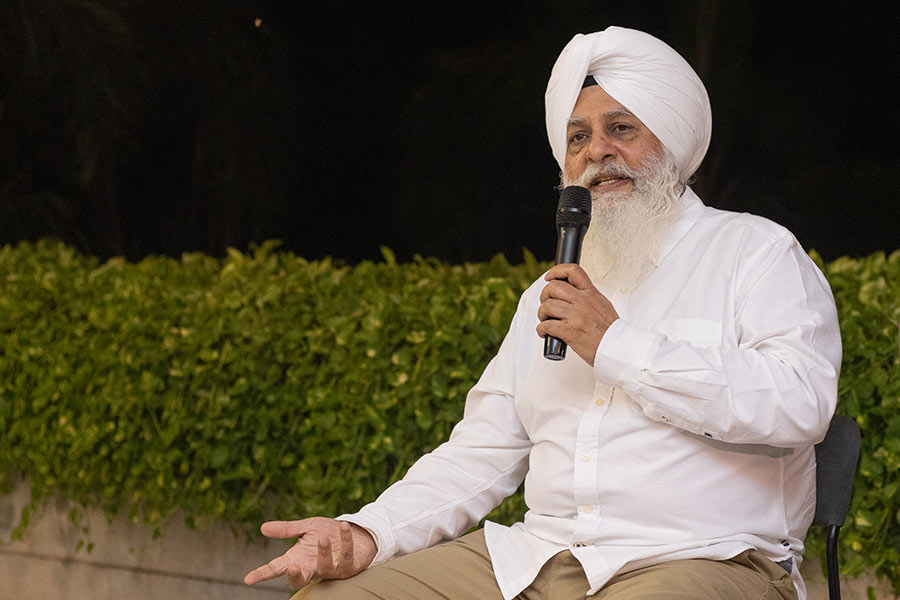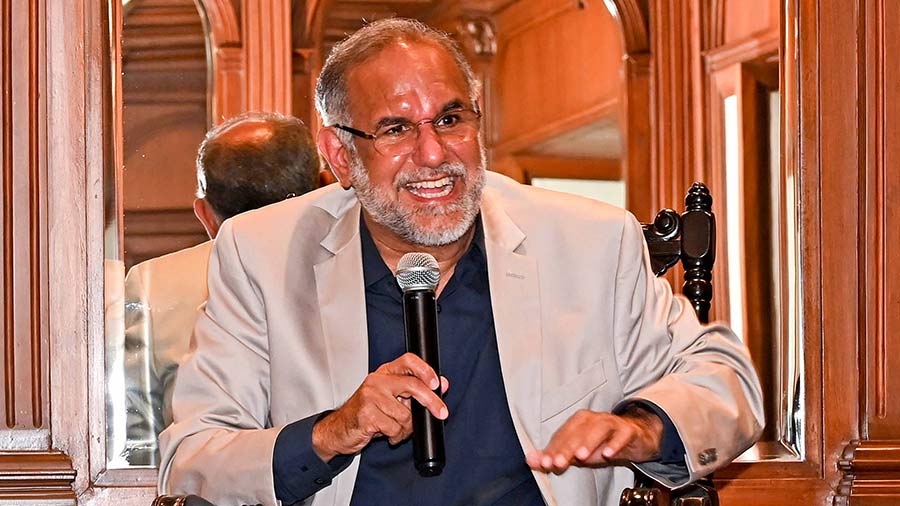Sarbpreet Singh, a celebrated author of Sikh history, was in Kolkata to discuss his latest book, Cauldron, Sword and Victory: The Rise of the Sikhs (Penguin Viking), at the Birla Academy of Art and Culture on November 16. Singh was in conversation with Sunetra Mitra, who teaches history at the RKSM Vivekananda Vidyabhavan.
This book is Singh’s second volume in his series, The Story of the Sikhs. While the first volume establishes the tenets of the faith as per the ten gurus — from Guru Nanak to Guru Gobind Singh — the second focuses on the 18th-century evolution of the Sikh religious identity into a political one. Cauldron, Sword and Victory sheds light on how Guru Gobind Singh reorganised the Sikhs even after losing his family, how he confronted Aurangzeb when the latter did not keep his word, and how he did not want to appoint a successor during the time of his death to lead the Sikh community. Rather, he said that the Guru Granth Sahib would be the spiritual guide for Sikhs after his death.
‘Leaderless and orphaned people rose from the ashes of oppression and challenged the might of the Mughal empire’
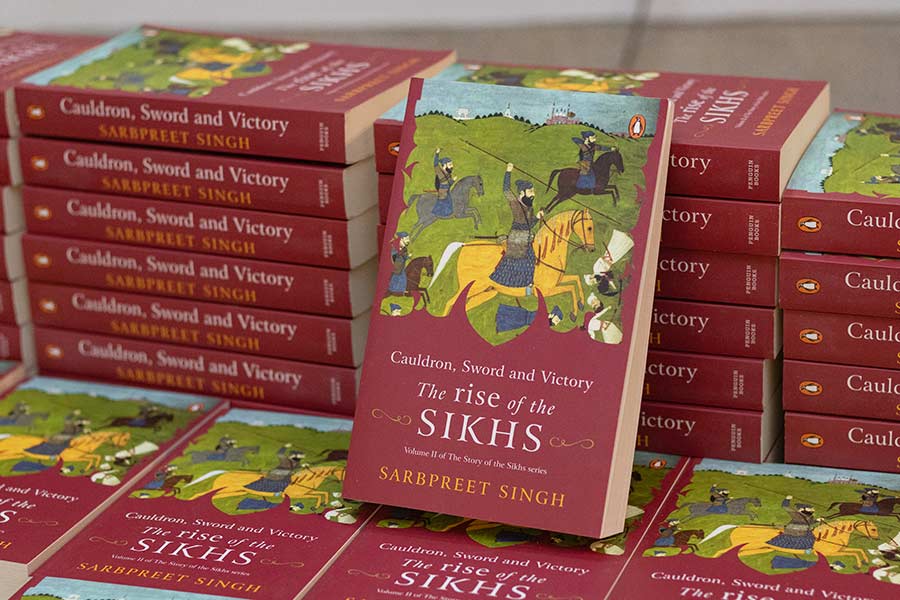
‘Cauldron, Sword and Victory’ was published in June
Despite Guru Gobind Singh’s immense faith that nothing would go wrong after his death, a lot of things did go wrong. According to Sarbpreet Singh, “The next 72 years that followed the passing of Guru Gobind Singh brought great pain and despair, but also great glory for the Sikh Panth. It was a period in which a leaderless and orphaned people rose from the ashes of oppression and challenged the might of the Mughal empire.” The premise of Singh’s book revolves around this journey of the Sikh community and the complexities of their identity, when the political situation compelled them to stand up against forces that targeted to crush the Sikhs. Such forces included the Mughals, the governors of Punjab, Nadir Shah of Persia, the Afghans under Ahmad Shah Abdali and regional powers like the Marathas, Jats and Rohillas (the British were still just settling in).
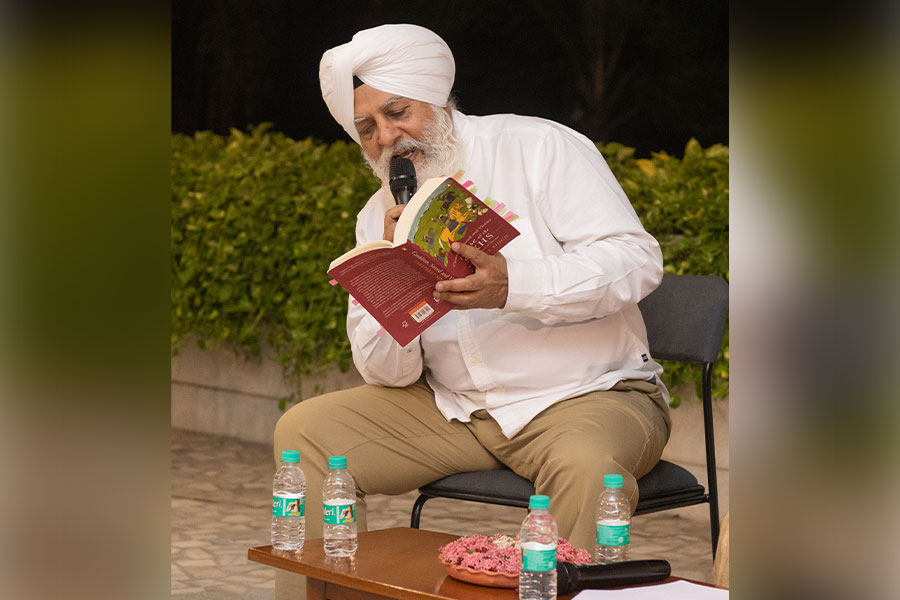
Singh spoke about the poetry of Qazi Nur Mohammad and how it affected stereotypes regarding the Sikh community
Singh proceeded to share his impressions of the poet Qazi Nur Mohammad, who had written poetry on stereotypes related to the Sikh community, which have still not gone out of context. There were descriptions of how the Sikhs were good warriors and mastered the art of guerrilla warfare. There was a mention of the effective dhai-phatt style of fighting, which, though no longer in vogue, has stories about it passed down the generations as oral history.
‘My task is to inform, inspire and maybe entertain a little bit’
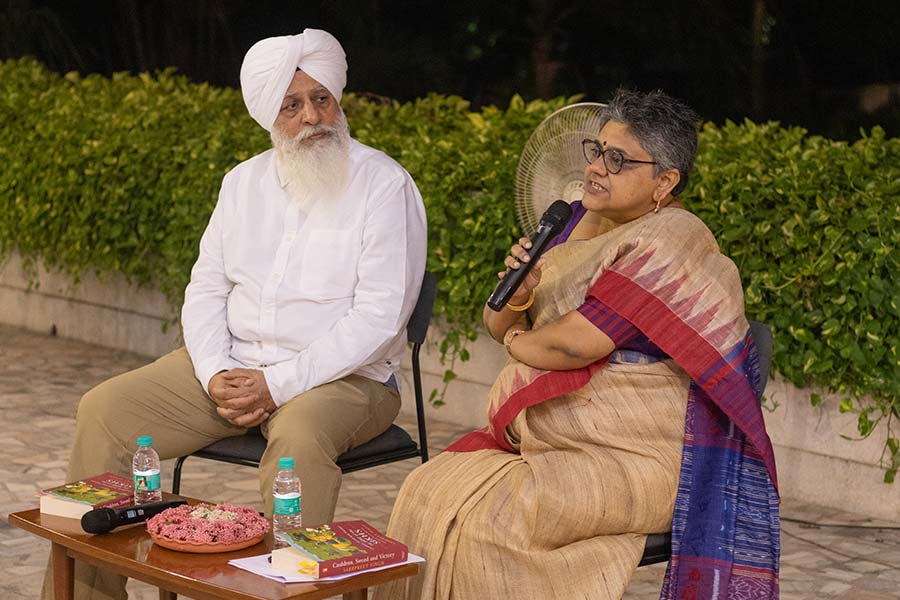
Singh in conversation with Sunetra Mitra
Singh also read out poems by Sikh historian Ratan Singh Bhangu. Singh felt these, as oral histories, would be more relevant for the younger generation. “All my work, when it comes to history, is really trying to distil what I learned over the years, and presenting it in a very engaging and accessible manner to young people, with the hope that some of them might be inspired. The whole point is to make the history easy to digest,” explained Singh.
As the discussion steered towards the legitimacy of public histories, moderator Sunetra Mitra highlighted the importance of literary sources in unravelling the regional history of any given period. “A wonderful aspect of the book is how the sources have been used, how they are intertwined with the narratives. He (Singh) has also provided beautiful translations to the poems,” said Mitra. Singh responded to the compliments with a modest clarification: “I am not an academic, I am a storyteller. My task is to inform, inspire and maybe entertain a little bit.”
